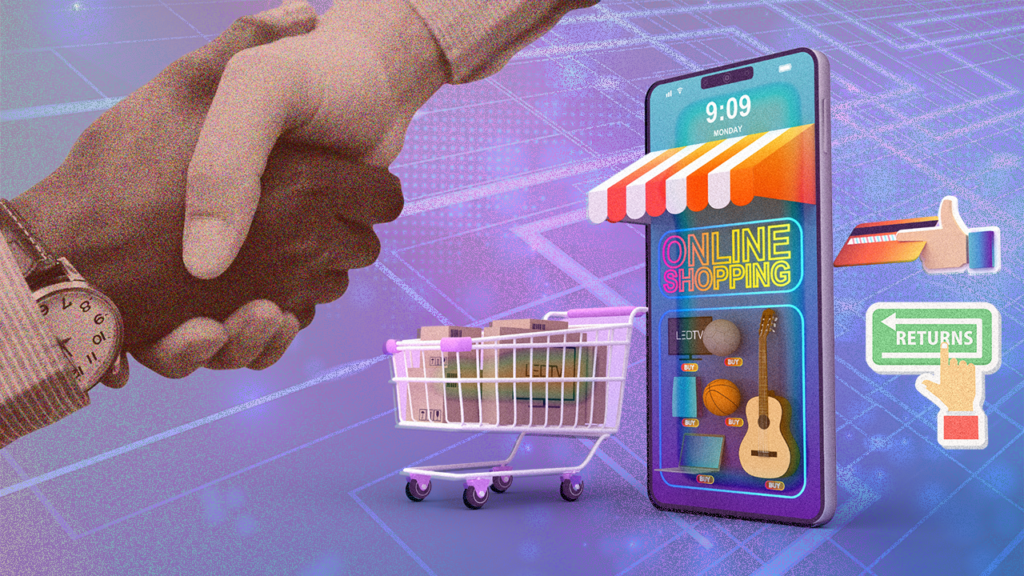Consumers are returning more items than ever before when buying from social commerce marketplaces: Marketers should be aware of why some aren’t coming back after a purchasing misfire.
Social Commerce Is Popular, But Trust Is An Issue
SimplicityDX’s Social Commerce Returns Survey asked 1,002 U.S. consumers about their perceptions of their shopping experiences.
While 82% of consumers are shopping through Facebook-branded marketplaces (52% via peer-to-peer shopping), Instagram is consumers’ destination of choice for name-brand products (15% of sales), with TikTok serving 9% of social commerce shoppers.
Regardless of where shoppers are finding products, their choice to shop on social commerce rather than, say, Amazon is either because they’ve engaged with an ad or branded content, or because they are searching for something not found easily on an alternative site. That makes user experience critical for brands selling on social commerce marketplaces.
SimplicityDX’s findings revealed that a single negative experience could transform consumer perceptions of social commerce. After making a return, 66 percent of social commerce shoppers stated that they are unlikely to purchase via a social commerce marketplace again and would exercise caution if, at some point, they decided to do so.
According to a recent survey by Accenture, nearly half of consumers who shop via social channels do not trust that their purchases are secure and anticipate that returns will be an issue. Social commerce shoppers ranked easy returns and refunds, clear product descriptions and images and loyalty rewards as their top three priorities. When consumers are unhappy with the user experience on social shopping journeys, they tend to bail on the experience, and for users flush with shopping alternatives, it may be hard to convert them a second time.
That means brand marketers’ efforts to drive sales through social channels may be wasted if user experience falls short. The study shows that 49 percent of consumers who made a return after purchasing on a social commerce marketplace stated that they would prefer to buy directly from the brand in the future—just 17 percent were willing to chance another social commerce purchase again.
Of course, this looks like an opportunity for brands—even if consumers are dissatisfied with a social commerce storefront. The problem is that a consumer simply Googling for their favorite brand might end up anywhere, with consumers purchasing from private resellers on eBay, Amazon, Etsy or even sites selling knock-offs.
User experience on social commerce sites really matters. Thankfully, marketers aren’t powerless to protect their brands. Below, we’re listing three rules to employ when developing social commerce campaigns or launching a new storefront:
Ensure that the shopper’s journey is simple and value-focused.
Users don’t want complexity when they look for new items or make a purchase. Make sure that checkout processes are smooth and easy to navigate (or use a platform plug-in that makes this easy).
Make it easy to view and learn about new items without too many clicks.
It is easy to lose sight of what consumers really want when the temptation to overwhelm users with content is so strong. Shopping on social commerce sites should be as effortless as reading a news feed—consumers don’t want to work at learning about a product when they are in lean-back mode.
Make social commerce more rewarding than going to their favorite ecommerce site.
Everyone loves rewards, but social commerce shoppers are in a unique position that makes rewarding them rewarding for marketers as well. When consumers are shopping on their social media accounts, they are already connected to other consumers who value their opinion—making them happy with rewards, a great deal or a fun shopping experience can transform them into instant brand ambassadors.
The bonus for getting social commerce right? According to the Accenture study mentioned above, social commerce shoppers are two times as likely to buy from a brand they’ve never heard of before and also twice as likely to buy a bundle of recommended products as other shoppers.

